This illustration show you guide on how to calibrate hydrostatic pump for Bobcat All-Wheel-Steer loader.More repair topic for Bobcat,please refer to:Bobcat Excavator Repair
Warning:
Put jackstands under the front axles and rear corners of the frame before running the engine for service.Failure to use jackstands can allow the machine to fall or move and cause injury or death.
Place the loader on jackstands.
Operator must be in the seat and the seat bar down.
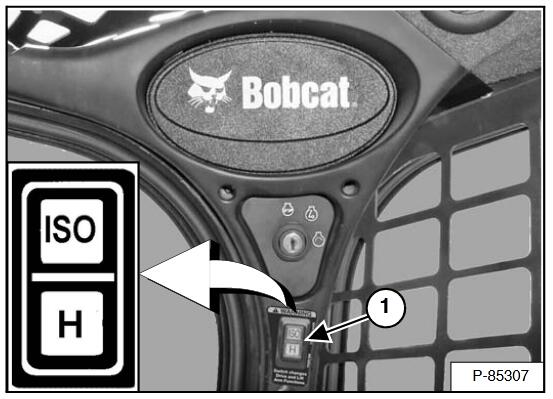
Close the cab door. (If equipped.)Place the loader Control Pattern Switch (Item 1) in the ISO position.Verify that the parking brake / switch is in the OFF position.
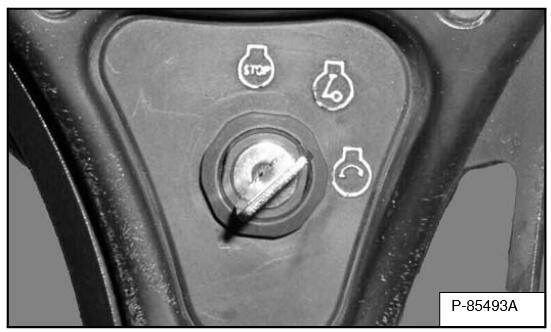
With the seat bar down, turn the key switch to the RUN position.
NOTE: Do not start the engine.
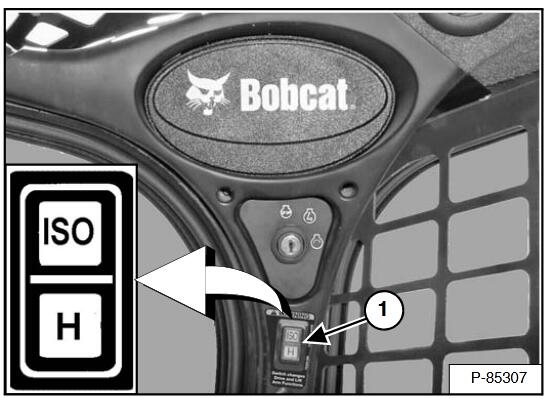
The Control Pattern ISO Switch (Item 1) will start flashing.
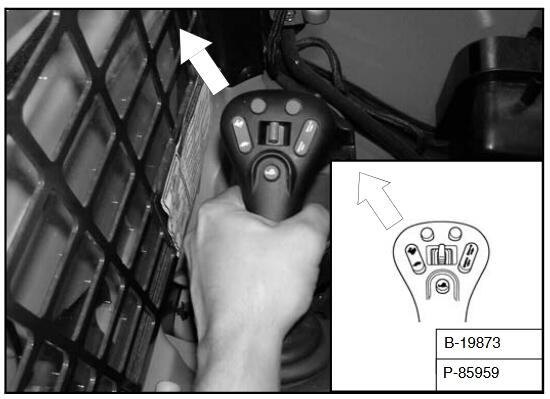
Move the left joystick to the forward-left corner position and hold in position.
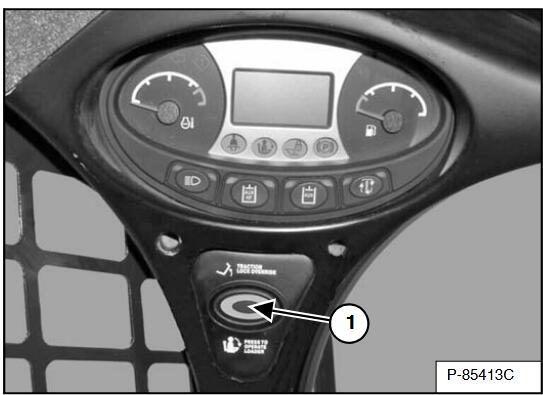
Press the PRESS TO OPERATE LOADER Button (Item1) while holding the left joystick in position.Three audible beeps will sound.
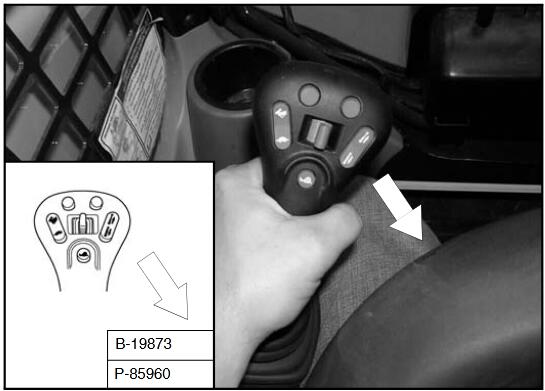
Move the left joystick to the reverse-right corner position and hold in position.
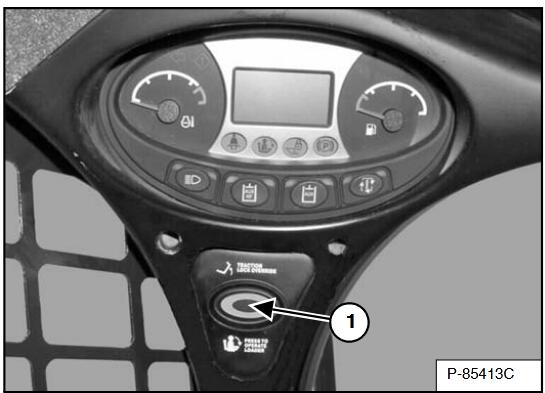
Press the PRESS TO OPERATE LOADER Button (Item1) while holding the left joystick in position.Three audible beeps will sound.
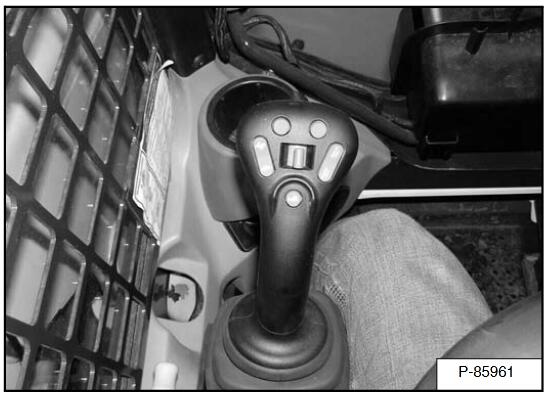
Allow the left joystick to go to the neutral position.
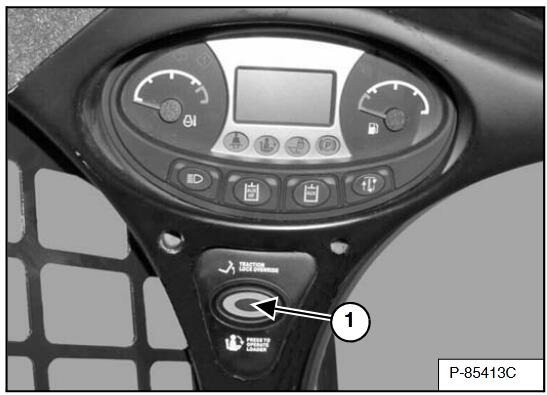
Press the PRESS TO OPERATE LOADER Button (Item1).Three audible beeps will sound. Start the engine from the RUN, RUN / ENTER position.
DO NOT TURN TO STOP POSITION. This would cancel the calibration mode and the procedure would have to be repeated.
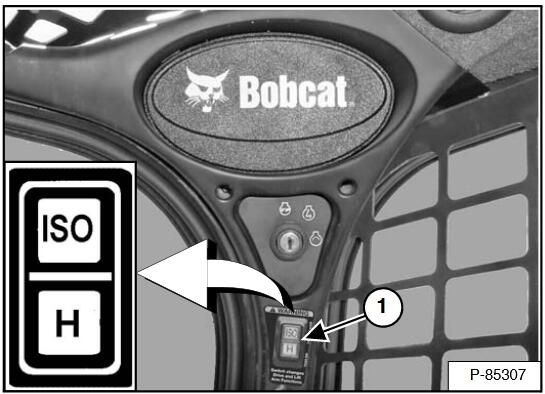
The Control Pattern ISO Switch (Item 1) will stop flashing, and will remain ON for the rest of the calibration procedure.
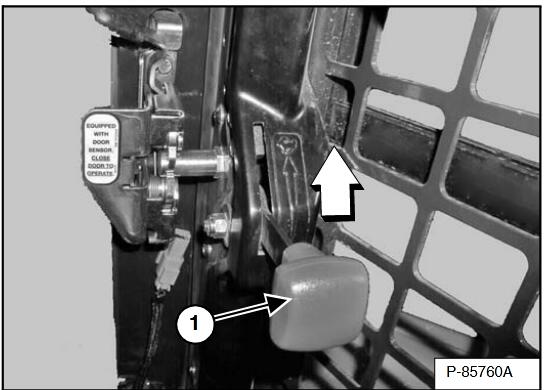
Move the engine speed control (Item 1) to high idle.
NOTE:If at any time during calibration the operator needs to stop the loader, turn the key OFF, lift the seat bar, or return the joystick to the neutral position. The calibration procedure will stop. To return to calibration mode, the operator must start the complete procedure from the beginning.
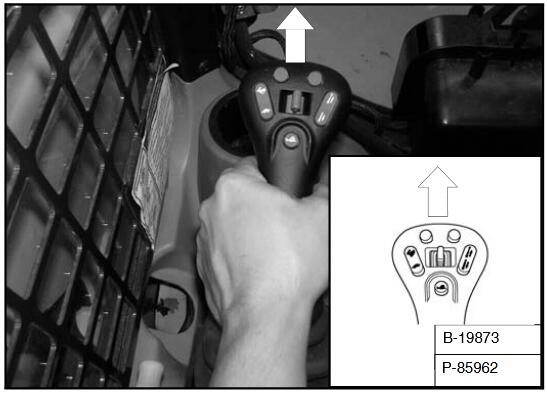
Move and hold the left joystick to the forward position until the forward calibration is completed
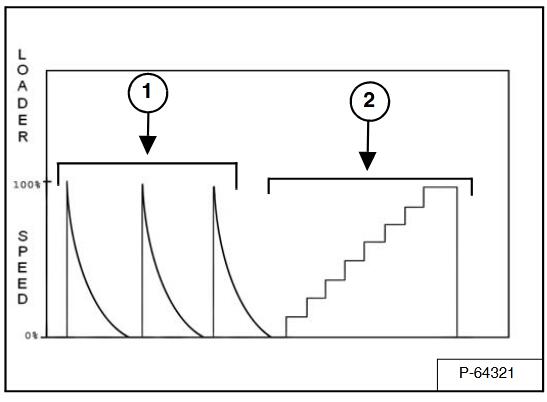
The loader speed will “ramp up” quickly (Item 1) and slow down 3 times in a row.
The loader will then “stair step” the speed (Item 2) until it reaches full speed and then come to a stop.Continue to hold the left joystick in the forward position until the loader wheels come to a stop and an audible beep is heard. Forward calibration is complete.NOTE: If the wheels do not stop moving in Full Speed Forward in 2 minutes or less, there was an error in the calibration procedure. The operator must shut the loader OFF, and start the calibration procedure from the beginning.
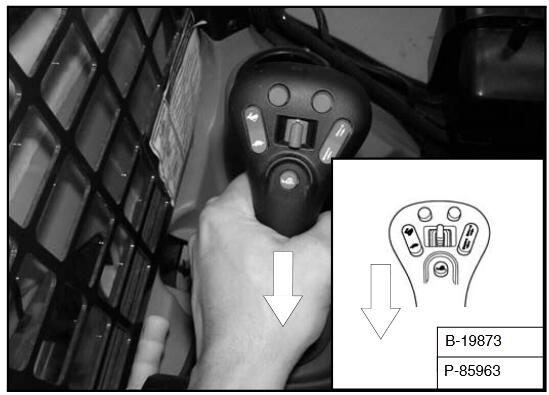
Move and hold the left joystick to the reverse position until the reverse calibration is completed.
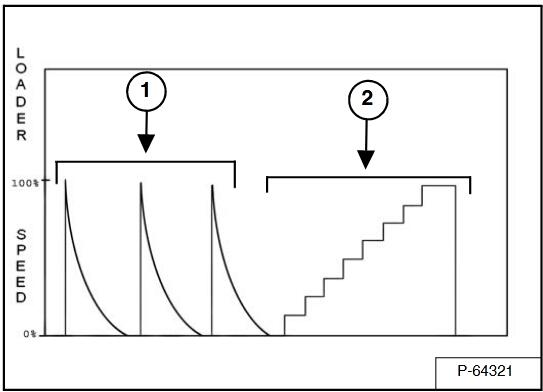
The loader speed will “ramp up” quickly (Item 1) and slow down 3 times in a row.The loader will then “stair step” the speed (Item 2) until it reaches full speed and then come to a stop.Continue to hold the left joystick in the reverse position until the loader wheels come to a stop and an audible beep is heard. Reverse calibration is complete.
NOTE:If the wheels do not stop moving in Full Speed Reverse in 2 minutes or less, there was an error in the calibration procedure. The operator must shut the loader OFF, and start the calibration procedure from the beginning.There will be an audible beep and the PRESS TOOPERATE LOADER and TRACTION lights will go out.The SEAT BAR and LIFT AND TILT lights will remain on.The 75-98 error code will clear. There should be no other codes in the display area.Allow the joystick to go to the neutral position.Once the calibration procedure is complete the Steering Drift Compensation values will be reset to [S—-] or neutral.Press the PRESS TO OPERATE LOADER button. Move the left joystick to forward position and check for normal forward wheel or track rotation.Move the left joystick to the reverse position and check for normal reverse wheel or track rotation.Stop the engine, and remove the loader from jackstands.The calibration procedure is completed.After calibration is complete, use Steering Drift Compensation for fine tuning or if an acceptable line of drift cannot be achieved.
If loader does not maintain a desired travel path with Steering Drift Compensation at maximum setting [S-R10]or [S-L10], see the electrical and hydrostatic troubleshooting